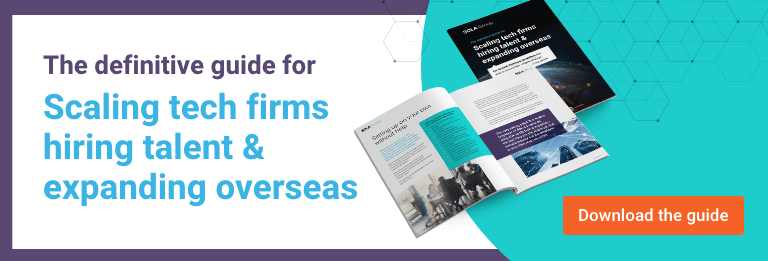The cloud sounds promising, and it sounds like a good idea, but there are still many myths that make it seem like a stretch too far for some.
The cloud has a 35% - 60% lower TCO (total cost of ownership) than on-premises systems. The reasons for this are well documented. However, for companies that are not "cloud native" or that have an IT department that grew up internally, or companies that rely on third parties to deliver their systems, the cloud is still a bit of an enigma, when in reality it makes sense to move part or all of the systems there.
So, what are those myths and why is it that many companies are still procrastinating about whether to start the move?
Research suggests that there are really four areas of concern for most companies:
- A lack of training in Cloud Technologies
- Knowing where to start
- Bandwidth and systems performance
- Not as secure as on-premises data centres
So, let us deal with each of these points one by one.
A lack of training in Cloud Technologies.
The irony is, if you know and understand the given technology you wish to deploy, you will not really need much training because cloud technology is data centre technology, not some new rocket science!
The most advanced cloud company is AWS, offering over 180 different "…..as a Service"; which is a lot to get your head around. But, here's the trick, for these services you will either have to learn the skills for the technology anyway, as they are new, or you will already have them, irrespective of where the infrastructure to provide it physically sits.
These cloud services perform the same activity in the same way as if you had them set up in your own data centre because they are the same. The only difference is that the physical infrastructure is elsewhere, you are renting the application for the time you use it, with no license or contract. And, you don’t have to worry about the entire process of procuring, setting up and maintaining the "new" infrastructure required to perform this service with all of its subsequent costs, internal approvals, depreciation and asset management. You can have it instantaneously.
That said every single service does have online, self-paced learning and dozens of classroom sessions from which to pick up the knowledge, as well as exams and certification should you need it. And given the simplicity and low cost of building and tearing down an environment in AWS, practising and testing your skills could not be easier.
Of course, there is the possibility that you don't have an IT department per se, then you will need to rely on consultancies like SOLA Consulting, but as you're already familiar with trusting external companies to manage your IT for you, that shouldn't be a change too far.
The bottom line? Once you've moved across to the cloud, running and managing your applications is" the same as before without the hassles of having to administer and maintain your own infrastructure, except your access networks (which you're already doing).
Knowing where to start
In consulting we always recommend clients to start with "the lowest hanging fruit" that is to say the easiest part with the biggest return. It gives people courage both that it works and that there is a measurable impact. But by far and away the most important element to retain is that, collectively as a company, you need to have an understanding of what are the strategic outcomes desired for the company, and how technology can enable those outcomes.
The bigger the picture in mind at the start the easier to determine how to start, to make sure you have the right foundation in place to succeed. IT is a tool that can disrupt entire industries (think smartphones and cameras for example, or Tesla and transportation). Know what to and how to approach your desired outcomes and then make that happen using the cloud. Why? Because you can attempt and fail far faster and far cheaper in the cloud than by using capital expenditure to do it. But you can also succeed far faster and far cheaper in the cloud too - you can scale at the click of a button as your success grows - not so easy to do when you have budgets and procurement cycles that take weeks or months.
So, in real life, for example, this could mean that we know we will be using sensors and tags in our product to improve our customer retention and change the way our products operate in the future, today we need to enable our CAD/CAM systems to scale - so we migrate that first to prepare the way to handle this new "IoT" technology, thus file and storage services in the cloud could be the kickoff point. Or it could be legacy systems that no longer scale, an older version of Windows; the key is to determine through a cause and effect analysis what that step-off point is and go from there.
It is as straightforward as that.
Bandwidth and System performance
When the cloud became the latest IT buzzword in the early 2000's bandwidth was of genuine concern; fibre was costly and GSM networks were just beginning to embrace (but not roll out) 3G. Today for $20 a month you can get individual 150GB/s fibre in your home and 5G on your smartphone. So, bandwidth is a red herring; today it performs really well, almost ubiquitously.
The issue of a server and storage being separated and causing disruptions in performance or graphic-rich applications performing badly over WAN's are potentially still there, but edge computing (AWS Outpost and AWS Direct Connect for example) and 5G is putting paid to that too. For most businesses that type of edge speed is not required, even in these post-COVID-19 times with remote working becoming more and more normal, this is no longer an issue. For most businesses, access over a VPN is easily sufficient today and no application degradation is seen.
"In most cases, performance actually improves using AWS server instances and constant monitoring, as the device is set up to be "right-sized" - something that is practically impossible in an on-premises, CAPEX- based Data Centre."
Servers can expand and contract to meet demand on the fly, so for example, at month end server power increases as necessary, the process takes less time and the performance of other applications remains unaffected. And yet you only pay for what you use.
Not as secure as an on-premises Data Centre
I think Winston Churchill would have described this statement as a "technical inexactitude"; quite the reverse is true as an AWS Data Centre is more secure than a prison! Typically, they are "lights out" operations run remotely with no people on site. They are managed and patched, constantly up to date, with less downtime than an average data centre.
The infrastructure is fully redundant with full disaster recovery and business continuity in place meaning that operations continue in the event of any unforeseen event. Each region has multiple Availability Zones within it as well as failover to other regions too, this is set up by you and managed by AWS with Support Services.
"AWS has more security certifications for its data centres and platforms than any other Cloud provider and these are used as their standards for managing Security of the cloud."
That said, you are still responsible for the privacy & protection of the data in the cloud - as you are in your own DC. At SOLA Consulting we have a Data Protection practice to assist with that (whether in AWS or in your DC), and our consultants have had some spectacular GDPR success with many AWS clients.
Conclusion
Whilst moving to the Cloud can be an onerous task - re-platforming and changing internal processes and finance methods - it is proven to lower TCO dramatically. But also;
- It is easy to learn - it uses the same technologies as everyday IT
- Aligning with the overall strategy makes it simple to decide where to start
- Accessibility is easier and easier - as bandwidth and performance just get bigger
- It is more secure than an on-premises DC
Cloud also creates the opportunity to disrupt industries by enabling fast adaptation that CAPEX-based models do not, thus creating a remunerator effect. There are more and more services being added to emulate data centres and business requirements making it easier to execute business strategies by deploying the supporting technologies.
Procrastinating about migrating to the Cloud will lead to an inevitable demise when faced with competitors that do not.


